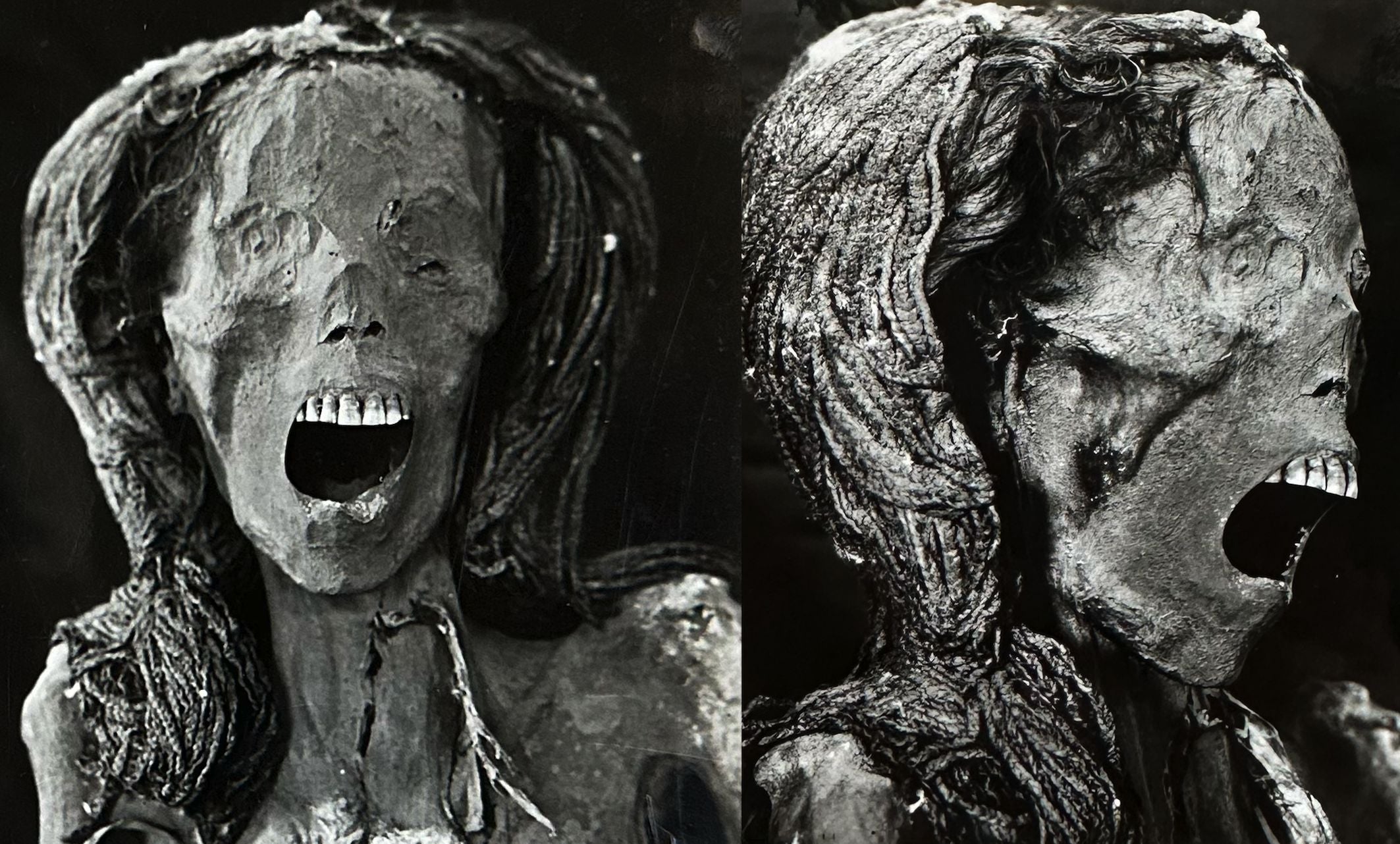In 1935, archaeologists from the Metropolitan Museum of New York unearthed the tomb of an ancient Egyptian architect known as Senmut, who had served the 18th Dynasty Queen Hatschepsut over 3,000 years ago. Among the relics taken from the site was an anthropic wooden coffin, whose features were inexplicably contorted into a scream that had been locked on her face since her death over three millennia ago.
As part of a newly published paper in the journal Frontiers in Medicine, Dr Sahar Saleem of the Al Ainy Hospital of Cairo University and co-author Dr. Samia Al-Mirghani gained permission from the Egyptian Ministry of Antiquities to unravel the secrets surrounding the Screaming Woman mummy. More specifically, they sought to use cutting edge scientific equipment to shed light on the subject’s life, death, mummification, and the cause for its chilling open mouthed ‘scream’.
To this end, the mummy was taken by truck from its resting place in the Cairo Egyptian Museum, and transported by truck to Germany where it was analysed using infrared spectroscopy and x-ray diffraction instruments, and virtually dissected using a CT scanner.
The latter provided a wealth of information on the mysterious woman’s health during life, including evidence that she may have had teeth removed during life using a form of primitive dentistry, and that she suffered from arthritis of the spine, as evidenced by bone spurs. Whatsmore, by precisely measuring the length of the mummy’s bones, and the smoothness of the pelvis, the team were also able to estimate that the ancient Egyptian stood around 154 centimetres tall in life, and that she was roughly 48-years-old when she died.
Despite the thoughroughness of the X-ray data at their disposal, the scientists were unable to pin down an obvious cause of death for the Screaming Woman mummy. However, they were able to reveal much about the events that followed.
Egyptologists had previously suggested that the mummy’s terrified expression may have been the result of poor funeral practices, which saw the embalmers fail to properly secure the mouth, which left it free to fall open as the body decomposed. This theory was further supported by the fact that the woman’s vital organs had not been ritually removed, as was the custom for high-ranking burials during the 18th Dynasty.
The new CT scans also noted the presence of organs amongst the desiccated remains, including the woman’s heart, lungs, and brain, which had shrivelled up in death, and come to rest at the back of her skull. However, the battery of tests also brought to light another discovery, which seemingly contradicted the notion of poor burial practices in favour of a more macabre cause for the cadaver’s screaming appearance.
Infrared spectroscopy had revealed the presence of frankincense and juniper resin covering the woman’s skin – both of which are embalming materials that must have been imported to Egypt at great cost from foreign nations. When taken in the context of the fine jewellery and wig discovered with the body in 1935 the authors of the new study found it unlikely that the embalmers were simply too careless to secure the mouth shut.
“The mummy’s screaming facial expression in this study could be read as a cadaveric spasm, implying that the woman died screaming from agony or pain,” explained Dr. Saleem. “The Screaming Woman is a true ‘time capsule’ of the way that she died and was mummified,”
Cadaveric spasms occur when groups of muscles used heavily in the moments before death become locked in place by postmortem rigor. In the case of the Screaming Woman, with the rigid muscles preventing others from closing the jaw during funeral preparations. The body may then have been embalmed before it had time to relax, or decompose, thus preserving the mysterious woman’s terrified expression for thousands of years.
Of course, the circumstances surrounding the death of the woman, and her entombment are shrouded in uncertainty, and – as noted by the authors – its possible that a range of other factors worked together to give the mummy its haunting appearance.
For more science news why not read up on the ancient geological mystery that was recently discovered linking 31 ancient Egyptian pyramids, or find out about how surgeons recently implanted a meglev-powered titanium heart in the chest of a human patient for the first time.
Anthony is a freelance contributor covering science and video gaming news for IGN. He has over eight years experience of covering breaking developments in multiple scientific fields and absolutely no time for your shenanigans. Follow him on Twitter @BeardConGamer












